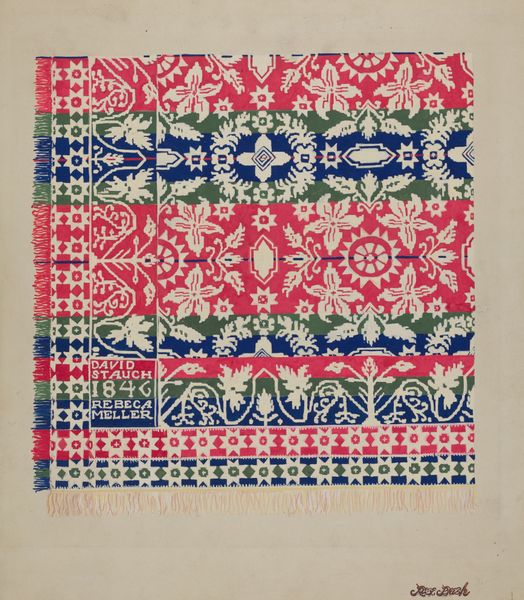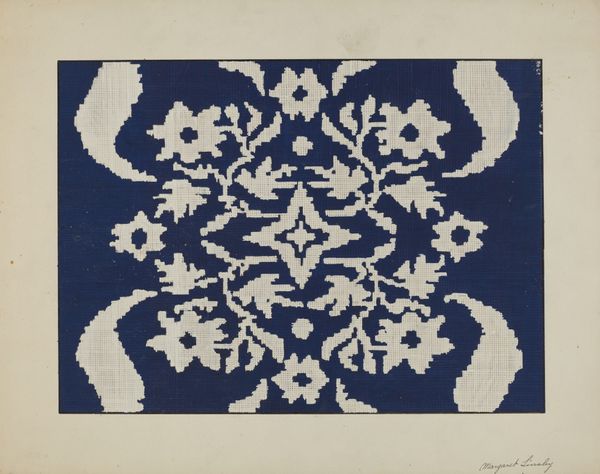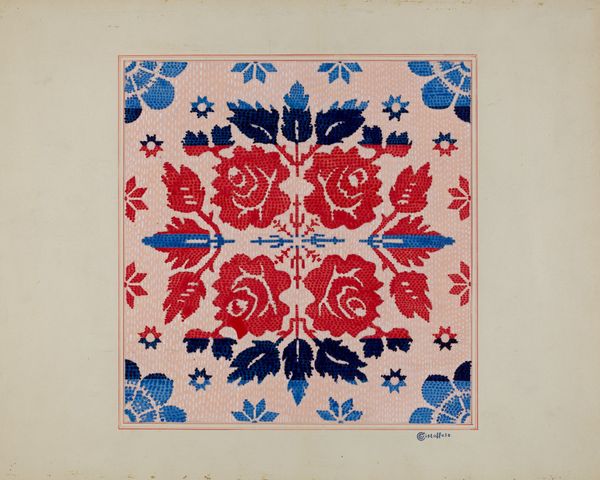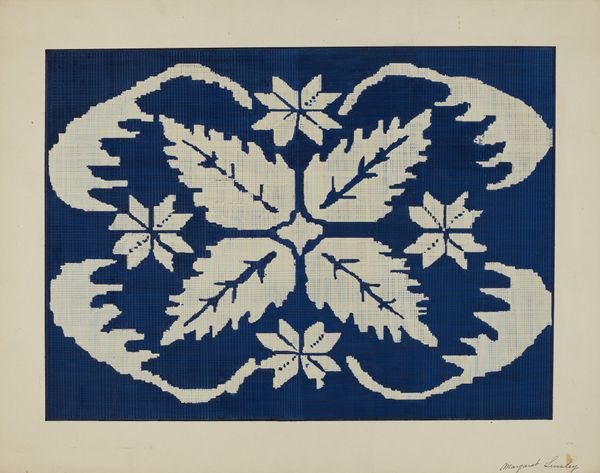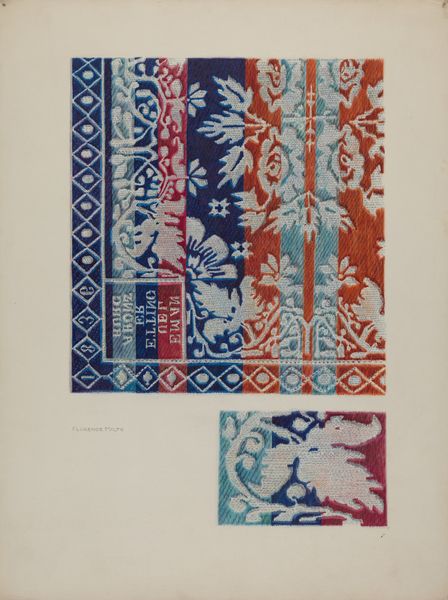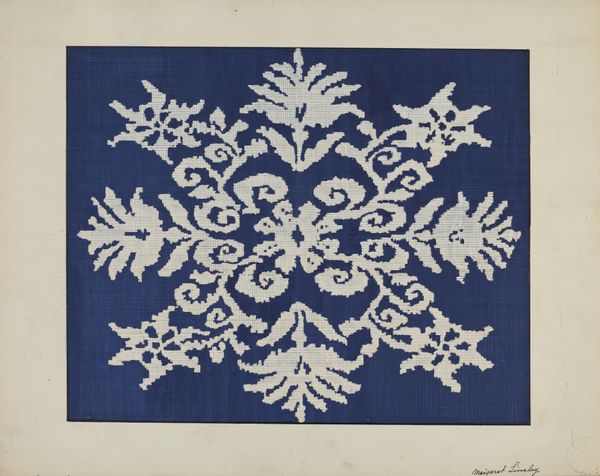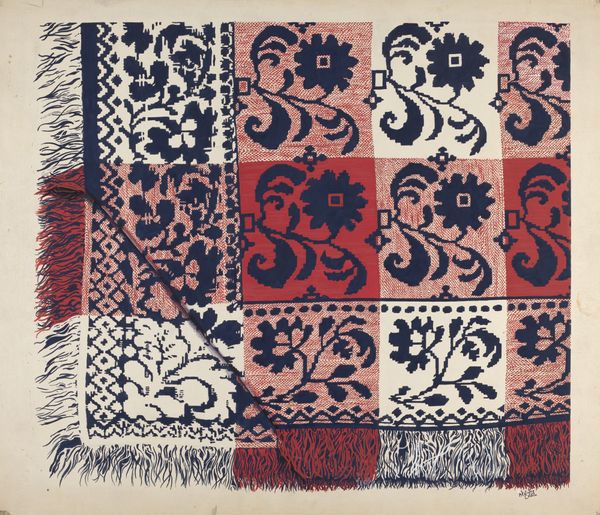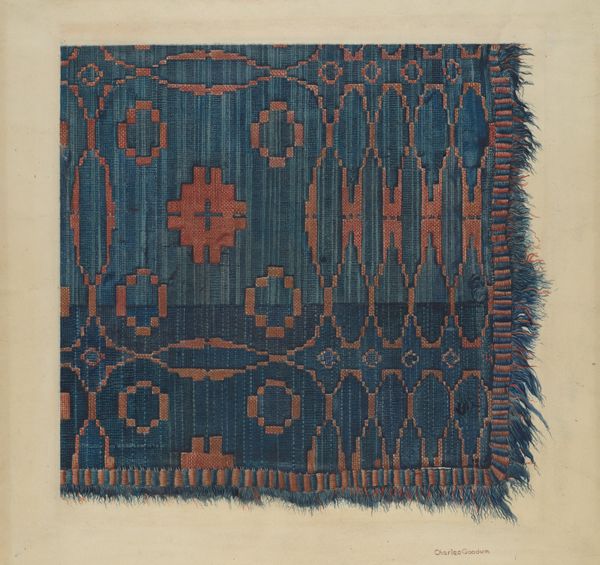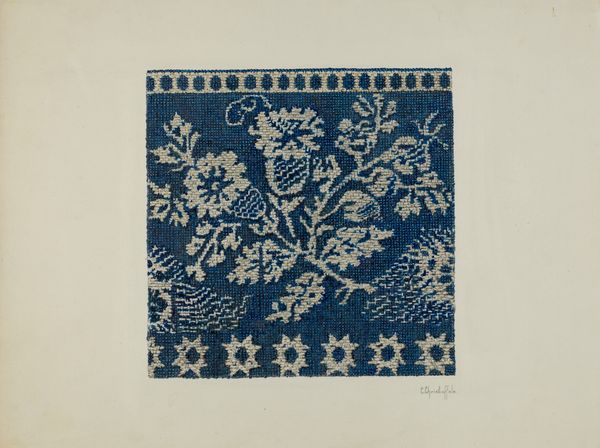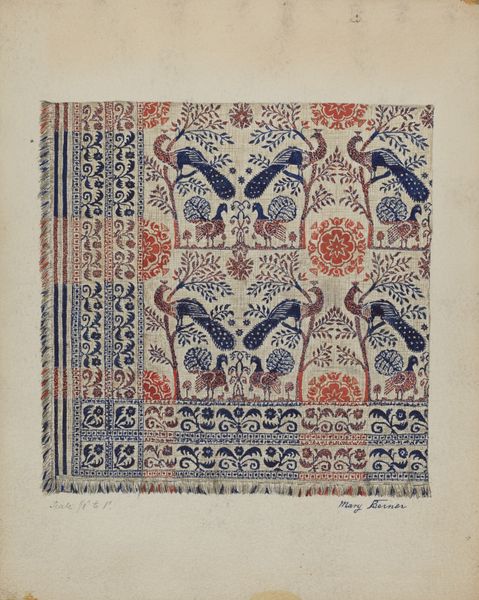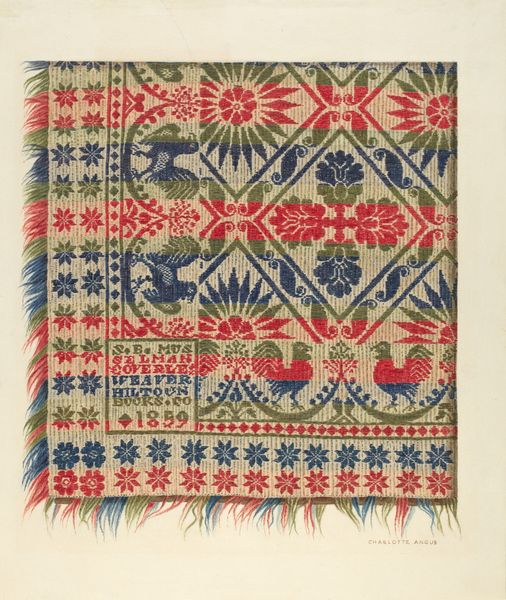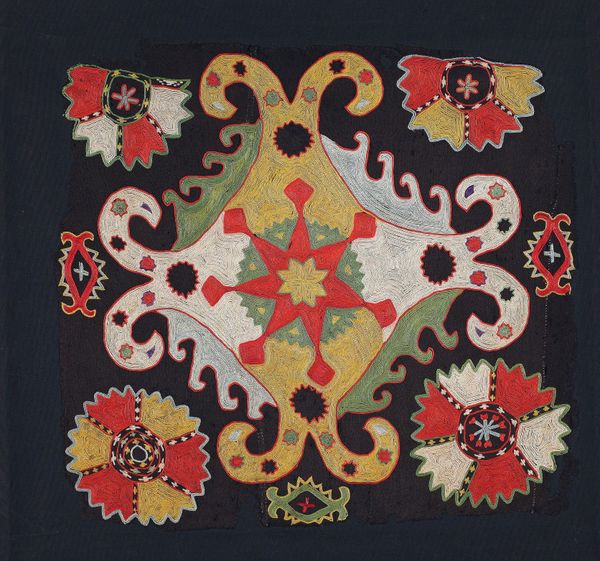
drawing, textile
#
drawing
#
pop art
#
textile
#
pastel colours
#
folk-art
#
geometric
#
decorative-art
#
decorative art
Dimensions: overall: 26.4 x 35.6 cm (10 3/8 x 14 in.)
Copyright: National Gallery of Art: CC0 1.0
Editor: This is a drawing for a "Coverlet," dating to around 1936, by Cornelius Christoffels. The rendering is pretty interesting, it seems to mimic textile in pastel colors and shows floral and geometric patterns... The juxtaposition of geometric shapes and swirling foliage creates a strangely balanced asymmetry. How might we interpret that? Curator: Let us first examine the intrinsic components of this drawing. Note the calculated arrangement of alternating vertical bands—red with ornate, botanical motifs flanking those of blue, themselves marked with centered floral forms. This division immediately establishes a structured framework. The composition’s surface has a calculated geometry. Editor: So, you’re highlighting the careful construction. What does that framework convey to you? Curator: Observe that the repeated floral designs—the roses in the red bands and the stylized blooms in the blues—demonstrate pattern work within clearly defined color parameters. It uses familiar images within a clear, repeated organization of space, and presents itself in ways we can describe with systems of line, tone, texture, and ultimately depth. Does this clarity resonate with you, even though it presents stylized, folkloric images? Editor: Absolutely. The careful placement gives the impression of formal planning that balances folksy floral patterns. What about the texture, created by the pastel strokes, in relation to the patterns? Curator: That relationship gives us depth within the pattern work, presenting us with opportunities for semiotic readings on culture as well as design. Look, the composition achieves tension by pushing at its own internally defined, pictorial space. Do you agree? Editor: I think I see that now! Initially, the colors distracted me from understanding its visual organization of forms. It’s given me new perspective. Curator: Indeed! Such close readings open opportunities. These sorts of examinations provide rewarding intellectual returns and allow us to analyze seemingly disparate images, while engaging in thoughtful art appreciation.
Comments
No comments
Be the first to comment and join the conversation on the ultimate creative platform.
